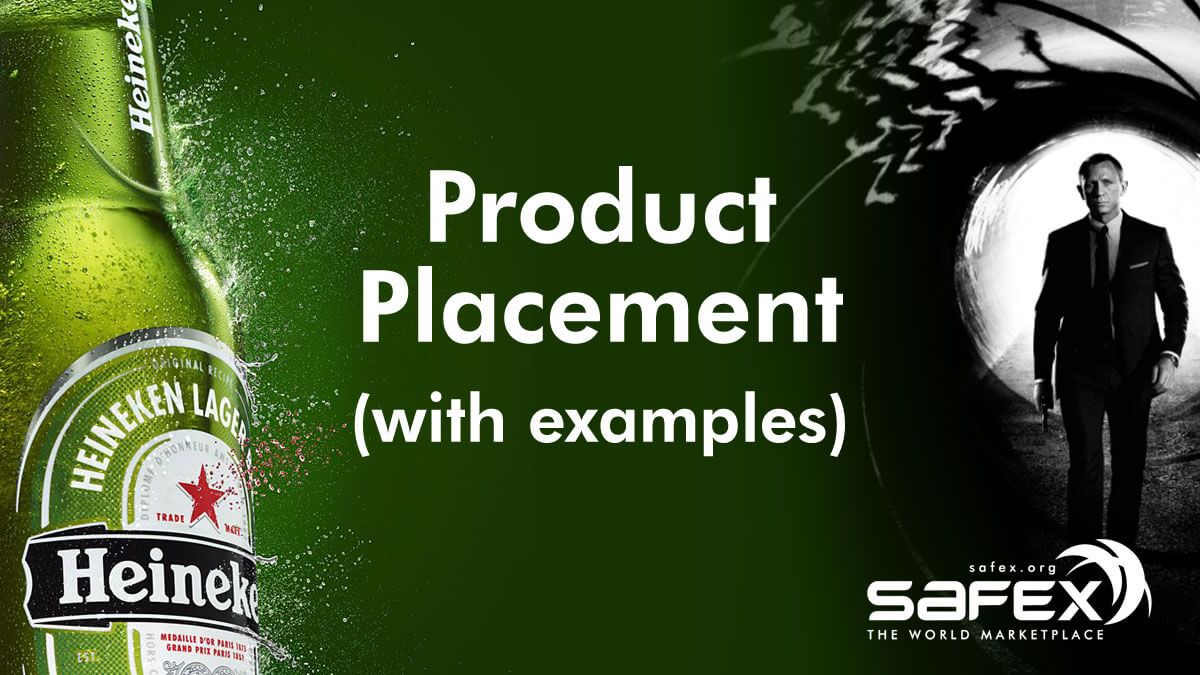How Important Product Placement is? (with examples)
Product placement is a powerful form of advertising used by brands to reach a wider audience more subtly than traditional ads.

We’ve all heard the phrase “product placement,” typically at the beginning of a TV show, so we know that branded products will appear at some point. But how many of you have ever thought about the value of product placement as a form of advertising?
The idea of companies placing their products in popular movies, shows, videos, etc., is not that new (it was introduced in the 19th century). Still, it’s safe to say that this powerful form of advertising won’t leave the industry any time soon. We’re going to discuss this topic in detail and include some famous product placement examples. That way, both big and small businesses will find a suitable way to implement product placement into their advertising strategies and use it to increase eCommerce revenue.
What is product placement?
Product placement refers to the act of placing your products in popular TV shows, movies, games, books, etc. Although it has been around for some time, it still plays an integral part in advertising. Today, when people gladly skip commercials that interrupt their favorite show, companies have to find new and effective ways to showcase their products outside the stores. One of those ways is product placement, so it continues to be one of the most important names in eCommerce terminology.
However, not every product placement turns out to be a success; advertising this way requires specific skills, calculations, and, most importantly, subtlety. If you place your product in an intrusive way and make it too obvious, odds are - the viewers will find it annoying. For instance, they’ll probably feel like they’re watching traditional commercials but are unable to skip them. You may also move their attention from the movie to your products for too long and in the wrong way. On the other hand, if you carefully place your products, the viewers will notice them subconsciously. If they’re emotionally invested in the storyline, your products will significantly gain in value, which is precisely what you want.
Product placement examples
By this time, it’s much likely that several different examples of product placement have crossed your mind. Still, we decided to list some of the most famous examples, so we can indeed illustrate the importance of product placement:
- Heineken in Skyfall, 2012: James Bond movies have always been an excellent opportunity for big names to place their products. Skyfall is a top-notch example because people were used to Bond ordering his shaken-not-stirred martini. When he turned it down for a bottle of Heineken beer, it was almost impossible for the fans not to notice it. The U.S. Heineken division cashed out 45 million dollars for the product placement in this movie.

- Ray-Ban Aviator in Top Gun, 1986: The collaboration between Ray-Ban and Tom Cruise started in 1983 when Risky Business was released. The actor wore the famous wayfarer model, and the company saw a 50% increase in sales. Three years later, in 1986, Top Gun got released, and Tom Cruise wore the evergreen Aviator sunglasses placed by the same company. Ray-Ban recorded 40% more sales in the following seven months.
- Manolo Blahnik in The Sex&City: We can all remember Carrie Bradshaw’s obsession for shoes, but especially the Manolo Blahnik models. The Spanish designer became a household name thanks to the appearance of his designer shoes in the popular series. He even custom-designed a pair for The Sex&City Movie.
- BMW Z3 in GoldenEye, 1995: Another example of successful product placement in James Bond movies is the BMW Z3 instead of the famous Aston Martin in GoldenEye. Some might say that this was a tricky move, but after BMW cashed out 3 million dollars for product placement, the company earned $240 million (and that’s for the advance sales alone). It was worth it.Mini Cooper in The Italian Job, 2003: To begin with, The Italian Job was first filmed back in 1969, and it featured an older model of BMW’s Mini Cooper. The remake was released in 2003, featuring Mini Cooper, but a newer version this time. BMW agreed to provide more than 30 cars for the filming and recorded a 22% increase in their sales.

How to use product placement
Product placement in movies mainly happens in the following ways:
- By accident, if neither the movie maker nor the brand intended to make a profit from it;
- Arranged so that the company gives a certain amount of their products to the movie makers;
- Arranged, if both parties are involved in financial compensation.
Although we mainly focused on product placement in TV shows and movies so far, you can also subtly (but successfully) place your products on social media, in retail shops, etc. For instance, we’re all aware of product placement on social media, even though it takes a “slightly” different form and is named differently - social media influencers. Influencers typically have a large base of followers, and the base itself is made of individuals interested in what the influencer does. Suppose you’re planning on implementing product placement on social media. In that case, the first (and probably the most important) step is to find an influencer who shares your niche and interest and can showcase your products to the target audience. For example, if your business sells fitness resistance bands on our platform based on blockchain eCommerce technology, your products shouldn’t be presented by a strict fashion influencer. The reason is apparent - pretty much no one will show interest in your brands when they’re looking for those Jimmy Choo shoes.
Final thoughts
Whether you want to achieve brand awareness, reach out to a broader audience or increase your sales rates, product placement can be your one tool with many purposes if it’s used correctly. Product placement examples we stated above should serve as a good starting point, and it’s up to you to find the most suitable way to place your products in the media because... shoppers are waiting to see your products, let them know you exist!
